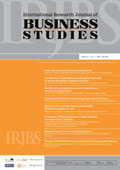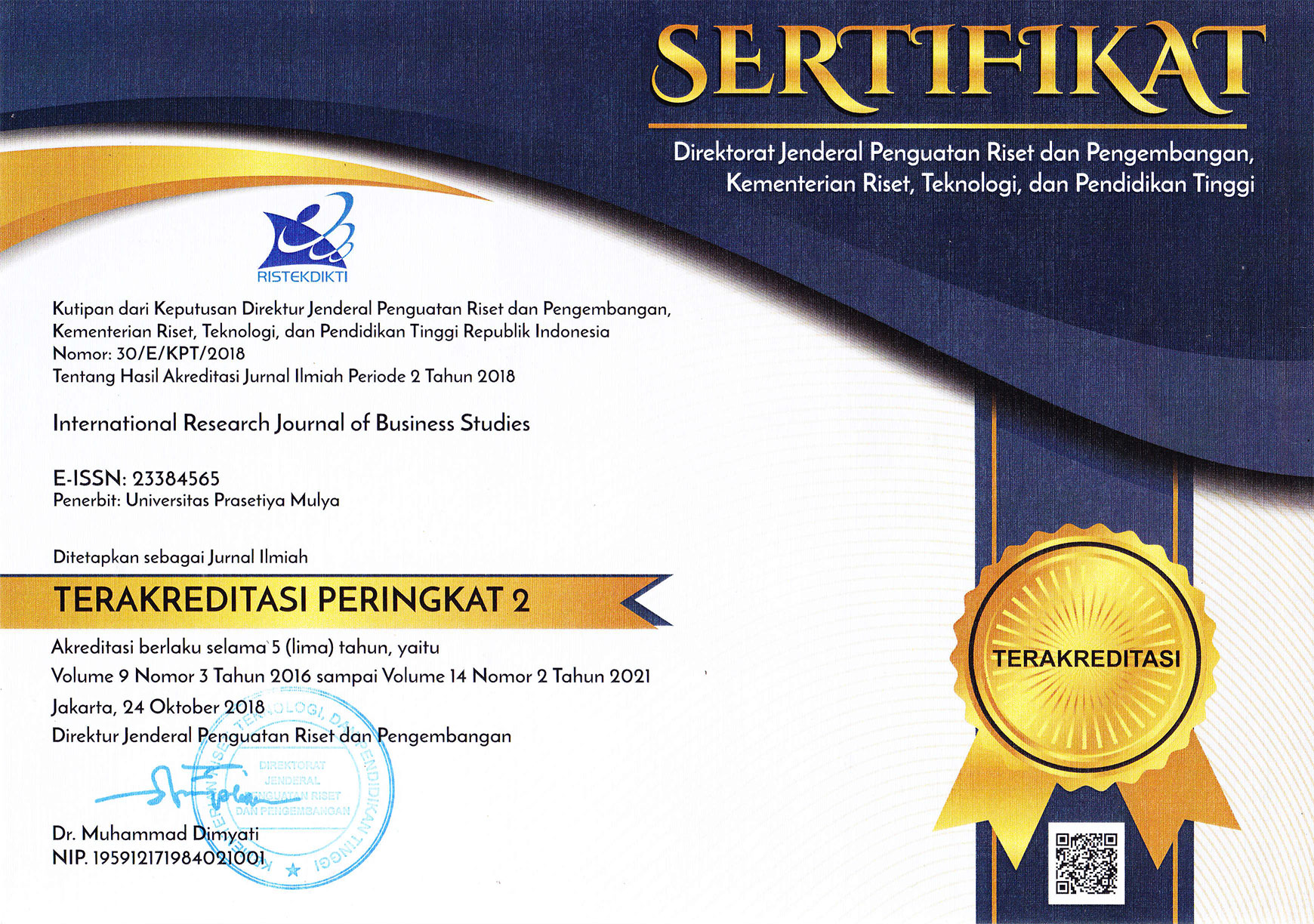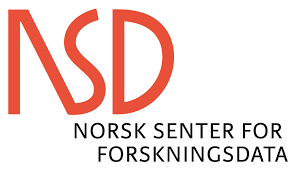Article Metrics |
|
|
Financial Literacy on Millenial Entrepeneurs during Pandemic Covid-19
Abstract
Keywords
Full Text:
References
Atkinson, A., & Messy, F. A. (2012). Measuring financial literacy: Results of the OECD/International Network on Financial Education (INFE) pilot study.
Ajzen, I. (1991). The theory of planned behavior. Organizational Behavior and Human Decision Processes, 50(2), 179–211.
Ameliawati, M., & Setiyani, R. (2018). The influence of financial attitude, financial socialization, and financial experience to financial management behavior with financial literacy as the mediation variable. In International Conference on Economics, Business and Economic Education 2018 (pp. 811–832). KnE Publishing.
Atkinson, B. J. (2013). Mindfulness training and the cultivation of secure, satisfying couple relationships. Couple and Family Psychology: Research and Practice, 2, 73–94.
Alessie, R.M., van Rooij, Lusardi, A. (2011). Financial literacy and retirement preparation in The Netherlands. Econ. Finance, 10, 637–656.
Altman, M. (2012). Implications of behavioural economics for financial literacy and public policy. The Journal of Socio-Economics , 41, 677– 690.
Atkinson, A., Messy, F. (2012). Measuring financial literacy: results of the OCD / International Network on Financial literacy (Infe) pilot study. http://dx.doi.org/10.1787/5k9csfs90fr4-en.
Baporikar, N. (2021). Financial Literacy as Strategy for Enhancing Financial Inclusion of Small Entrepreneurs. International Journal of Public Sociology and Sociotherapy (IJPSS), 1(2), 1-14.
Bernheim, B. Douglas. (1991). The Vanishing Nest Egg: Reflections on saving in America. A Twentieth Century Fund Paper.
Bernheim, B. Douglas. (1995). “Do Households Appreciate their Financial Vulnerabilities? An Analysis of Actions, Perceptions, and Public Policy.” Tax Policy and Economic Growth, American Council for Capital Formation, Washington, D.C.
Bernheim, B. Douglas. (1998). “Financial Illiteracy, Education, and Retirement saving,” in living with Defined Contribution Pensions ed. Mitchell, Olivia S. and Sylvester J. schieber. University of Pennsylvania Press, Philadelphia.
Bernheim, D., & Garrett, D. (2003). The effects of financial literacy in the workplace: evidence from a survey of households. Journal of Public Economics , 87, 1487–1519.
Bernheim, D., Garrett, D., & Maki, D. (2001). Education and saving: the long-term effects of high school financial curriculum mandates. Journal of Public Economics , 85 , 435–565.
Bucher-Koenen, T., Lusardi, A. (2011). Financial literacy and retirement planning in Germany. J. Pension Econ. Finance. 10, 565–584.
Dunn, L. F., & Mirzaie, I. A. 2012. Determinants of consumer debt stress: differences by debt type and gender. Department of Economics: Colombus, Ohio State University.
Eisner, S. P. (2005). Managing generation Y. SAM Advanced Management Journal, 70(4), 4-17.
Fergusson, D. M., Horwood, L. J., & Beautrais, A. L. 1981. The measurement of family material well-being. Journal of Marriage and the Family 715-725.
Gerrans, P., Speelman, C., & Campitelli, G. (2014). The relationship between personal financial wellness and financial wellbeing: A structural equation modelling approach. Journal of Family and Economic Issues, 35(2), 145–160.
Gutter, M., & Copur, Z. (2011). Financial behaviors and financial well-being of college students: Evidence from a national survey. Journal of Family and Economic Issues, 32(4), 699–714.
Gosal, R., Astuti, D., & Evelyn, E. (2021). INFLUENCE OF SELF-ESTEEM AND OBJECTIVE KNOWLEDGE FINANCIAL OF THE FINANCIAL BEHAVIOR IN YOUNG ADULTS WITH SUBJECTIVE FINANCIAL KNOWLEDGE MEDIATION AS VARIABLE. International Journal of Financial and Investment Studies (IJFIS), 2(2), 56-64.
Hauff, J. C., Carlander, A., Gärling, T., & Nicolini, G. (2020). Retirement financial behaviour: how important is being financially literate?. Journal of Consumer Policy, 43(3), 543-564.
Heriansyah, J., J., Rustiyarso, R., & Genjik, B. (2017). Pengaruh Mata Pelajaran Kewirausahaan Terhadap Minat Berwirausaha Siswa Sma Negeri 1 Sungai Ambawang. Jurnal Pendidikan Dan Pembelajaran Khatulistiwa, 9(1), 1–8.
Hilgert, M., & Hogarth, J. (2002). Financial knowledge ,experience and learning prefrences: Preliminary results from a new survey on financial litercay. Consumer interest annual , 48.
Hilgert, M., Hogarth, J., & Beverly, S. (2003). household financial management the connection between knowledge and behvior . Federal reserve bulletin , 309-202.
Hwee, J., Lin, L., & Sellapan, R. (2010). Financial planning and youth: Implications in educating generation Y. The 4E Journal, 10(2), 18-20.
Huston, S. J. (2010). Measuring financial literacy. Journal of Consumer Affairs, 44(2), 296-316.
Joo, S., & Garman, E. T. (1998). The relationship between personal financial wellness and employee productivity: A conceptual model. Personal Finances and Worker Productivity, 2(2), 162-171.
Joo, S., & Grable, J. E. (2004). An exploratory framework of the determinants of financial satisfaction. Journal of Family and Economic Issues, 25(1), 25-50.
Lusardi A. (2011). Survey of the States: economic and personal finance education in our nation's schools. Council Econ.
Lusardi, A., & Mitchell, O. (2011). The outlook for financial literacy.In. Financial literacy: Implications for retirement security and financial marketplace .
Kamakia, M. G., Mwangi, C. I., & Mwangi, M. (2017). Financial literacy and financial wellbeing of public sector employees: A critical literature review. European Scientific Journal, 13(6), 233–249.
Lind, T., Ahmed, A., Skagerlund, K., Strömbäck, C., Västfjäll, D., & Tinghög, G. (2020). Competence , Confidence , and Gender : The Role of Objective and Subjective Financial Knowledge in Household Finance. Journal of Family and Economic Issues. https://doi.org/10.1007/s10834-020-09678-9.
Lusardi, A., Mitchell, O. (2007). Financial literacy and retirement preparedness: evidence and implications for financial literacy. Business Economics 42 (1), 35–44.
Lusardi, A., Mitchel, O.S. (2008). Planning and financial literacy: how do women fare? American Economic Review: Papers & Proceedings 98 (2), 413–417.
Lusardi, A., Mitchell, O. (2011). The outlook for financial literacy. Financial literacy: Implications for Retirement Security and the Financial Marketplace. Oxford University Press, Oxford and New York, 1–15.
Mehmood, T., Alzoubi, H. M., Alshurideh, M., Al-Gasaymeh, A., & Ahmed, G. 2019. Schumpeterian entrepreneurship theory: evolution and relevance. Academy of Entrepreneurship Journal 25(4), 1-10.
Moore, D. (2003) Survey of financial literacy in Washington State: Knowledge, behavior, attitudes, and experiences. Washington State University Social and Economic Sciences Research Center Technical Report 03-39. URL: http://www.sesrc.wsu.edu/sesrcsite/recentpapers/pdfs/dfi-techreport-FINAL2-16-04.pdf.
Munoz-Murillo, M., Alvarez-Franco, P. B., & Restrepo-Tobón, D. A. (2020). The role of cognitive abilities on financial literacy: New experimental evidence. Journal of Behavioral and Experimental Economics, 84(February), 1–21.
Philippas, N. D., & Avdoulas, C. (2020). Financial literacy and financial well-being among generation-Z university students: Evidence from Greece. The European Journal of Finance, 26(4-5), 360-381.
OECD. (2013). OECD/info toolkit to measure financial literacy and financial inclusion: guidance, corequestionnaire and supplementary questions
Otoritas Jasa Keuangan (2017). Strategi Nasional literasi Keuangan Indonesia (revisit 2017). Publication. Retrieved from https://www.ojk.go.id/id/berita-dan-kegiatan/publikasi/Pages/Strategi-Nasional-Literasi-Keuangan-Indonesia(Revisit-2017)-.aspx.
Otoritas Jasa Keuangan (2019). Survei Nasional literasi dan Inklusi Keuangan 2019. Publication. Retrieved from https://www.ojk.go.id/id/berita-dan-kegiatan/publikasi/Pages/Survei-Nasional-Literasi-dan-Inklusi-Keuangan-2019.aspx.
Otoritas Jasa Keuangan. (2013). Literasi Keuangan. Konsumen. Retrieved from https://www.ojk.go.id/id/kanal/edukasi-dan-perlindungan- konsumen/Pages/literasi-keuangan.aspx.
Otoritas Jasa Keuangan. (2021) Strategi Nasional literasi Keuangan Indonesia 2021-2025. Publikasi. Retrieved from https://www.ojk.go.id/id/berita-dan-kegiatan/publikasi/Pages/Strategi-Nasional-Literasi-Keuangan-Indonesia-2021-2025.aspx.
Shim, S., Barber, B. L., & Lyons, A. C. (2009). Pathway to life success: A conceptual model of financial well-being for young adults. Journal of Applied Developmental Psychology, 30, 208–723.
Shim, S., Serido, J., Tang, C., & Card, N. (2015). Socialization proces and pathway to healthy financial development for emerging adults. Journal of Applied Developmental Psychology, 38, 29–35.
Schumpeter, J. A. 1939. Business Cycles: A Theoretical, Historical and Statistical Analysis of the Capitalist Process. New York: McGraw-Hill.
Schumpeter, J.A. 1934. The Theory of Economic Development. Cambridge, MA: Harvard University Press.
Śledzik, K. 2013. Schumpeter’s view on innovation and entrepreneurship. Management Trends in Theory and Practice,(ed.) Stefan Hittmar, Faculty of Management Science and Informatics, University of Zilina & Institute of Management by University of Zilina.
Sabri, Mohamad Fazli, & Zakaria, N. F. (2015). The Influence of Financial Literacy, Money Attitude, Financial strain and financial capability on young employees’ financial well-being. Pertanika Journal of Social Sciences & Humanities, 23(4), 827–848.
Younas, W., Javed, T., Kalimuthu, K. R., Farooq, M., Khalil-ur-Rehman, F., & Raju, V. (2019). Impact of Self-Control, Financial Literacy and Financial Behavior on Financial Well-Being. The Journal of Social Sciences Research, 5(1), 211–218.
Zulfiqar, M., & Bilal, M. (2016). Financial wellbeing is the goal of financial literacy. Research Journal of Finance and Accounting, 7(11), 94–103.
Copyright (c) 2022 Sita Deliyana Firmialy, Agus Maolana Hidayat

This work is licensed under a Creative Commons Attribution-ShareAlike 4.0 International License.
International Research Journal of Business Studies has been covered by the following services: | ||||||||||||||||||||||||
|



















